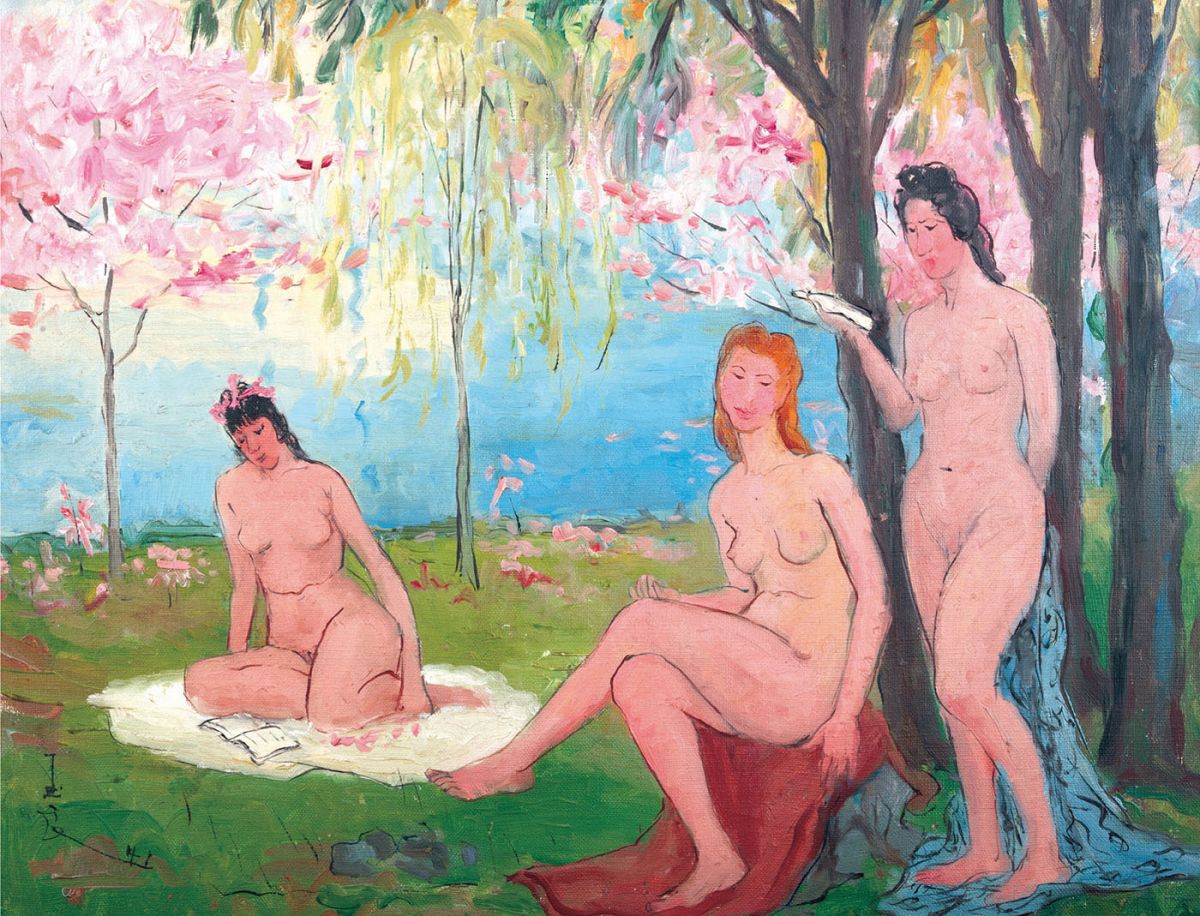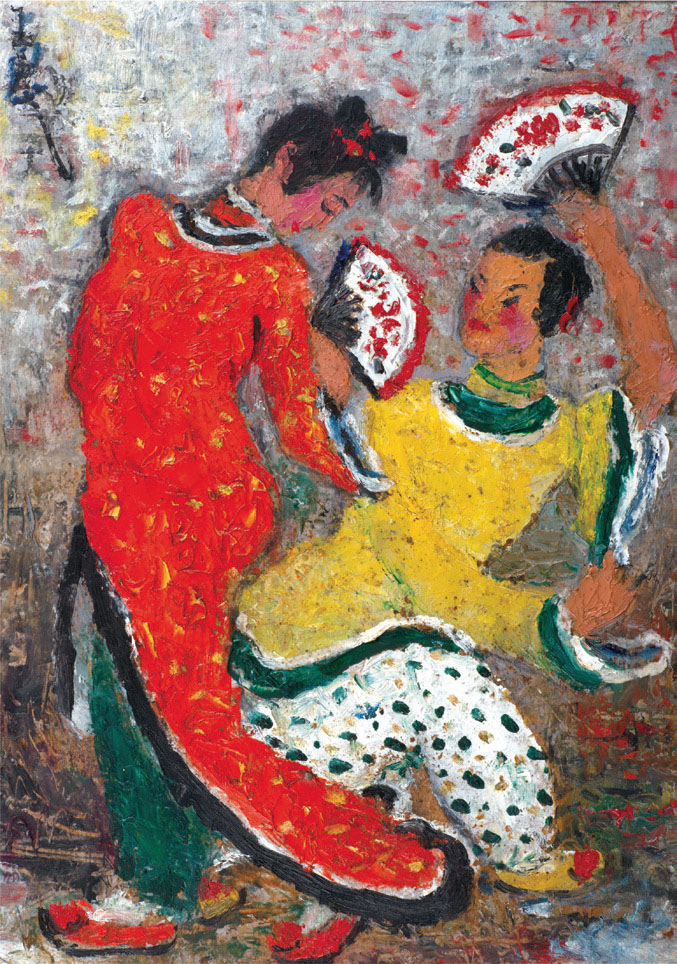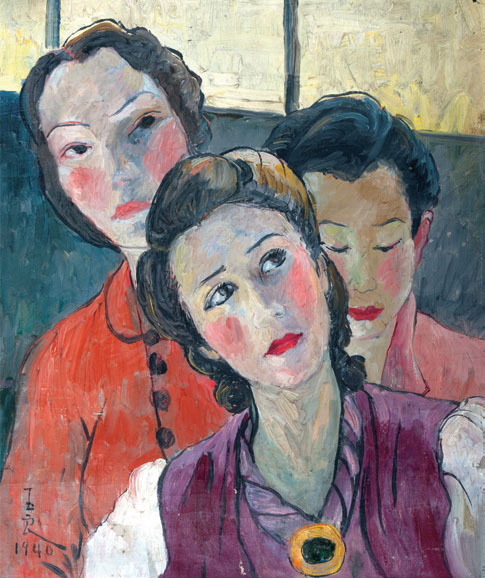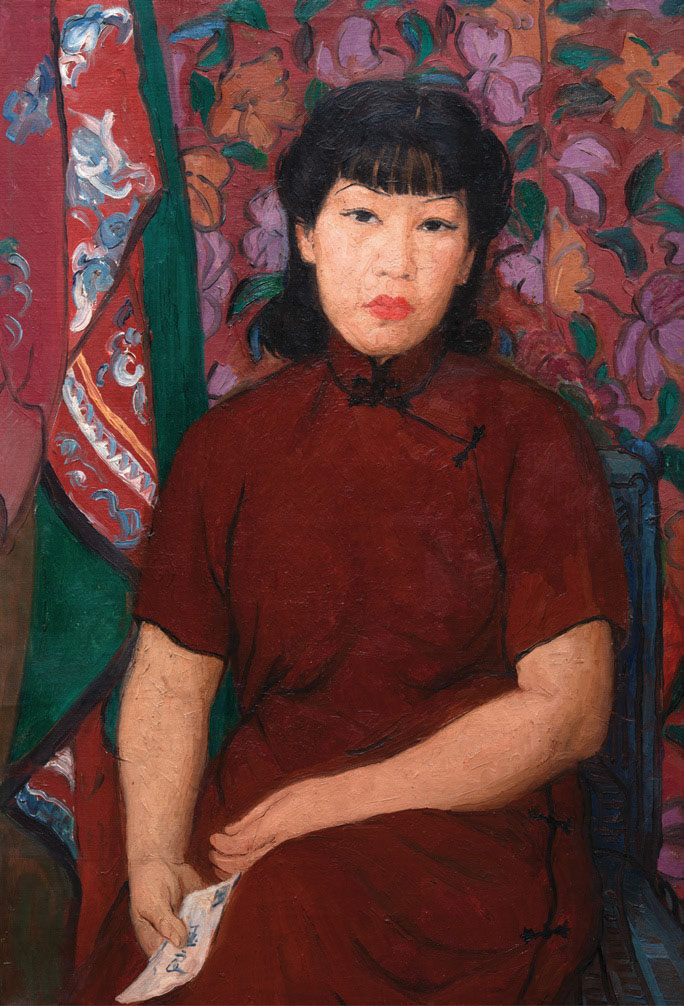Song of Spring: Pan Yu-Lin in Paris
<p><em>12 September 2018 – 6 January 2019</em></p><p><em>Chantal Miller Gallery,<br>Asia Society Hong Kong Center (ASHK), asiasociety.org/hong-kong<br>Sponsored by The Hong Kong Jockey Club Charities Trust, and part of ASHK’s ‘20th Century Chinese Female Artist Series’</em></p>
Asia Society Hong Kong Center’s ‘20th Century Chinese Female Artists Exhibition Series’, the first of its kind in Hong Kong, aims to reclaim the story of Chinese female artists. By providing local Hong Kong audiences with important examples of their artistic accomplishments, we hope to honor these female artists with the public recognition they deserve for their contribution to the making of modern China. From a wider community context, ‘the Series’ fits into the discourse on female empowerment and equality in today’s Hong Kong, where research indicates that women continue to face challenges in male-dominated industries as well as gender stereotypes in the media and the workplace.
While the diverse achievements of female talents across different fields have gained better light in recent years, female artists remain an under-represented and under-appreciated segment in many societies and even more so across Chinese communities. Yet the emergence of female artists in 20th century China was a testament to both the country’s social progress and the various redefinitions of modernity that were adopted in a historical context complicated by wars and disasters. In scholastic studies and exhibitions, however, attention has been focused on modern Chinese male artists. Exhibitions featuring the creative attainments and influences of their female counterparts from the period are few and far between, and rarely in monographic presentations.
The second exhibition in ‘the Series’ focuses on the life and works of Pan Yu-Lin, and also includes educational talks and activities targeting participation from the local community; these programs and activities draw upon Pan Yu-Lin’s story of great personal resiliency throughout her lifetime to exemplify the perseverance and outstanding achievements of women throughout the ages. Through education programs for children, students, families, and the general public, we will highlight achievements of women in various industries while connecting to the lives and careers of the unique female artists presented in the Series.
The artist: Pan Yu-Lin
Belonging to the first generation of Chinese students to study fine arts in France, Pan Yu-Lin (aka Pan Yuliang, 1895-1977) was a pioneer at a time when it was rare for women to achieve independent careers as professional artists. Pan was distinguished for her individual style that synthesized eastern and western sensibilities as well as her academic contributions as one of the first female art professors in modern China. Unlike most of her compatriots who built their careers back home after overseas education, Pan came to live and develop her individual style in the competitive Parisian art world until her death.
Born in Yangzhou to humble origins, Pan came of age when China underwent rapid modernization influenced by western science and democracy. During the radical 1919 May Fourth Movement, co-ed higher education was sanctioned and Pan seized the chance to enter the Shanghai Art Academy, thereafter traveled to France in 1921 on government scholarship to study fine arts. She spent almost a decade studying drawing, painting, and sculpture between Lyon, Paris, and Rome. The cornerstone of her western training was life drawing; she excelled at figure painting, which foreshadowed her signature mature works of female nudes. Yet, it was not so long ago that life drawing was still banned from women, as it was considered morally improper. Art historian Linda Nochlin identifies this restriction as a significant obstacle to women’s artistic potential, because the highest forms of painting all require mastery of painting the human figure. The taboo of life drawing in China continued through to the 1930s and Pan constantly had to confront and overcome the contentious emancipation of the female body in her art-making.
The exhibition: Song of Spring
In search of creative breathing space, Pan returned to Paris in 1937 to find new inspiration for her own visual language. The many striking portraits she completed in this period opens the exhibition, entitled: Song of Spring: Pan Yu-Lin in Paris. In western art history, portraiture had historically asserted the status of the sitter. The fact that Pan, a Chinese woman artist, often depicted herself at the easel is an assertion of her individual identity and the appropriation of western art modality for new expression in modern Chinese art.
Pan’s iconic works of the nude continue the exhibition. Depicted in sketches, ink and color, and oil, Pan’s female nudes reveal how she could capture natural expression of the body involved in various activities, with her subjects often oblivious to our gaze, completely at ease in their physicality. Many of Pan’s nudes combine the fluid lines of Chinese calligraphy with western pointillist approach to color, creating a unique modern aesthetic that bridges eastern and western sensibilities. Pan also often represented women of color, speaking to her experience as an émigré artist in France. The exhibition concludes with Pan’s humanistic vision in a series of dancing women that spotlight free expression of the female body in idyllic visions, and reveal her ability to translate the vitality of three-dimensional human body on canvas.
This first-ever solo exhibition of Pan Yu-Lin in Hong Kong brings treasured works, many grade one cultural relics, from the Anhui Museum to a local audience in a rare presentation. The life and art of Pan Yu-Lin is invaluable for learning about the impact of Western painting on modern Chinese art and the significance of revolutionizing culture in the making of modern China. Pan’s embodiment of the learned and independent new Republican woman also speaks to the greater history of Chinese female emancipation and sheds light on contemporary gender discourses that are increasingly urgent today.
With thanks to
Song of Spring: Pan Yu-Lin in Paris is guest curated by Dr Eric Lefebvre, Director of Cernuschi Museum in Paris, with Joyce Hei-ting Wong (Chantal Miller Gallery, Asia Society Hong Kong Center) as assistant curator. The exhibition is made possible by The Hong Kong Jockey Club Charities Trust. In 2017, Joyce Hei-ting Wong was also involved with the first instalment of ASHK’s ‘20th Century Chinese Female Artist Series’: Painting Her Way: The Ink Art of Fang Zhaoling.
All images, courtesy Anhui Provincial Museum.



